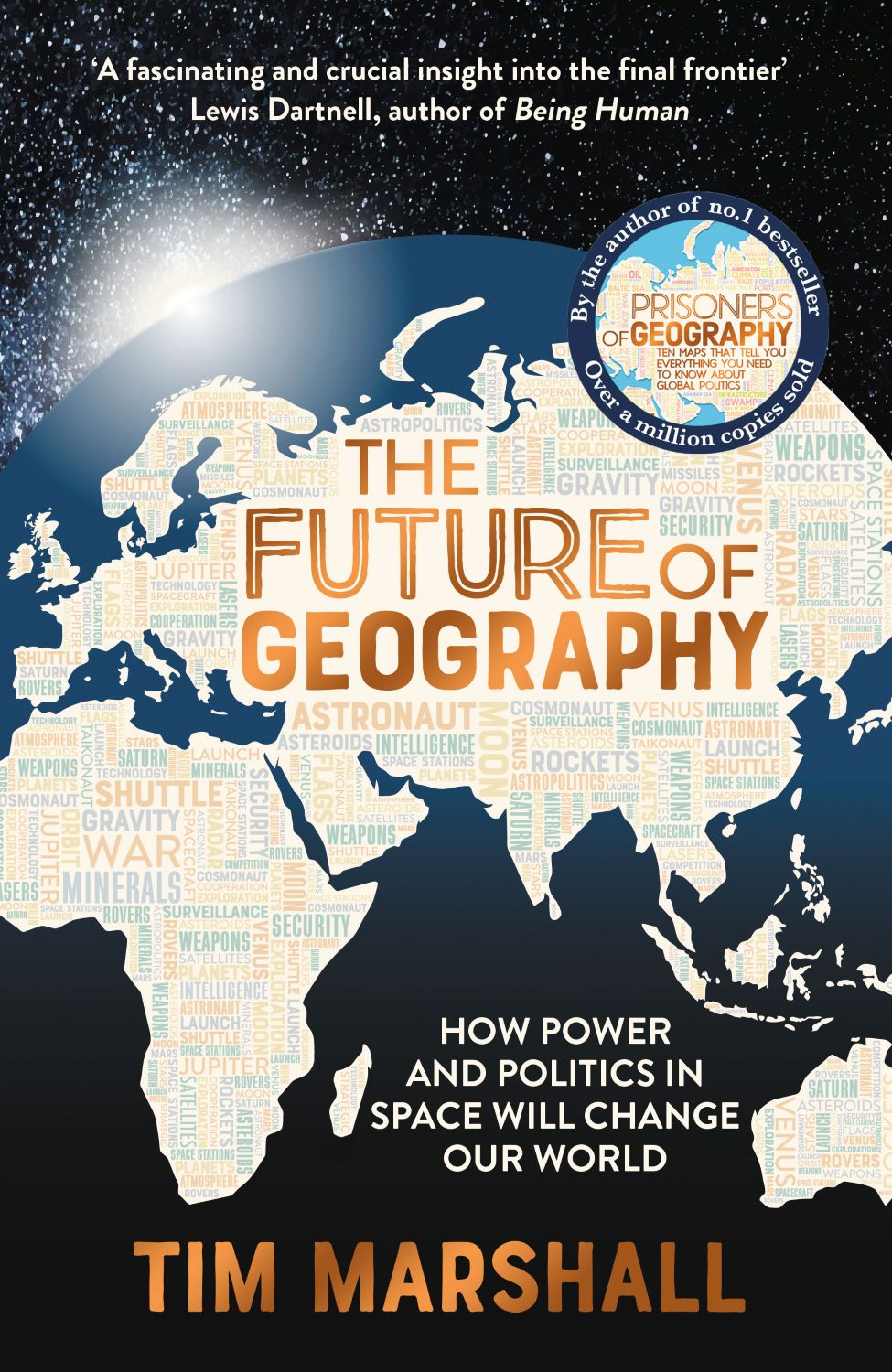A book of formidable detail: Lord Howell reviews 'The Future of Geography'
4 min read
Tim Marshall brings his much praised mastery of geography, politics and history up into the realms of the lawless final frontier of space
Throughout history a key to battlefield success, maybe the key, has been to know exactly where the enemy were, in which direction they were moving, and what surprises they might be planning.
In earlier days it was via scouts, spies, and rumours. Then taking to the air changed everything. Now satellites in their hundreds hurtle round the inner Earth orbit, starting about 60km above us, with lenses so accurate that almost nothing, even when heavily camouflaged, escapes the intrusive eye, penetrating “the fog of war” as never before.
In The Future of Geography Tim Marshall carries his much-praised mastery of the mix of geography, politics, and history into the sky and space. As he describes in formidable detail, inner space – in which most satellites operate – is now the warfare area of modern times.
This is where targets are identified with deadliest accuracy, where assassination hits are pinpointed, where data is streamed back to killer drones, where new defence projects taking shape are instantly spotted, unless hidden underground, where the entire surface of the planet can be mapped in a 24-hour circuit. It is where the Americans keep their satellite communications and position their 24 satellite Global Positioning System (GPS). No surprise that both similar Russian and now Chinese systems operate in the same crowded orbit zone.
All this comes tumbling out of Tim Marshall’s pages as he sets it in the wider context of space and rocketry now already with us or emerging. And this of course is not futurology but very much about the here-and-now and the jostling between powers.
Inner space is now the warfare area of modern times
The other less military dimension is one that the powers sought in the past to keep separate: the host of ostensibly civilian satellites, which almost every country needs to operate and develop, that deliver your sat-nav information, tell the weather, and back up earth-bound communications and subsea cables (now under increasing direct threat themselves) – all now integral component parts of a nation’s vital infrastructure.
All this activity today leaves the inner and medium Earth orbits (from 2,000 up to about 35,000km) as choked environments, accumulating debris, largely unregulated and therefore increasing hazardous.
Once it was hoped that at least beyond these over-crowded inner spaceways, in the third outer Earth orbit (where Earth’s gravity pull ends and deep space begins, at just over 35000km above the planet), more sensible international cooperation would prevail. This is where the focus widens to renewed Moon visits, to Martian expeditions and to the soaring ambitions of the likes of Elon Musk. But that, too, is now turning into a wild west of competition and rivalry, projecting deepening world divisions far out into space.
In happier days, after the USSR collapse back in the 90s – when some of us half-hoped great Russia would join the comity of nations, and before the Putin poison – Marshall tells how the Americans, Russians, the EU, Japan, and several others agreed to build a huge International Space Station (ISS), with living quarters and science labs, which would also be host to several more nationalities – at one time 13 at once. A Russian Soyuz capsule would do the main servicing and ferrying.
 It appears to be still up there. On the ground there has been growing acrimony. Up above one can only guess how the Russians and others are getting along since the Ukraine horror. Recent footage of two cosmonauts still on board the ISS, carrying flags from the Russian-occupied Donbas region, give a hint about Russian attitudes. It is due to be decommissioned and “de-orbited” in 2031. The Russian space role could be the big loser – at least one comforting thought to be drawn from an area fraught with growing dangers.
It appears to be still up there. On the ground there has been growing acrimony. Up above one can only guess how the Russians and others are getting along since the Ukraine horror. Recent footage of two cosmonauts still on board the ISS, carrying flags from the Russian-occupied Donbas region, give a hint about Russian attitudes. It is due to be decommissioned and “de-orbited” in 2031. The Russian space role could be the big loser – at least one comforting thought to be drawn from an area fraught with growing dangers.
Lord Howell is Conservative peer
The Future of Geography: How Power and Politics in Space Will Change Our World
By: Tim Marshall
Publisher: Elliott & Thompson
